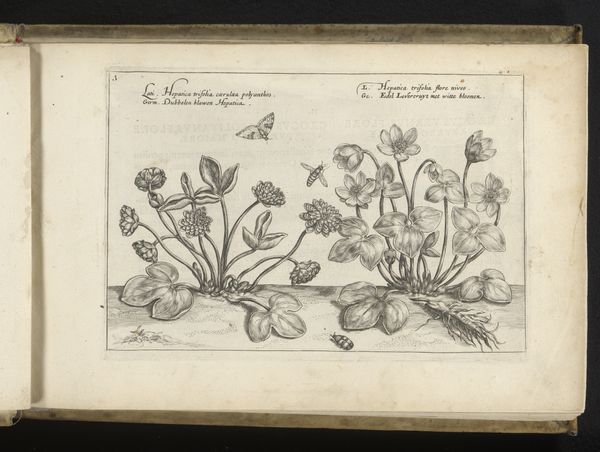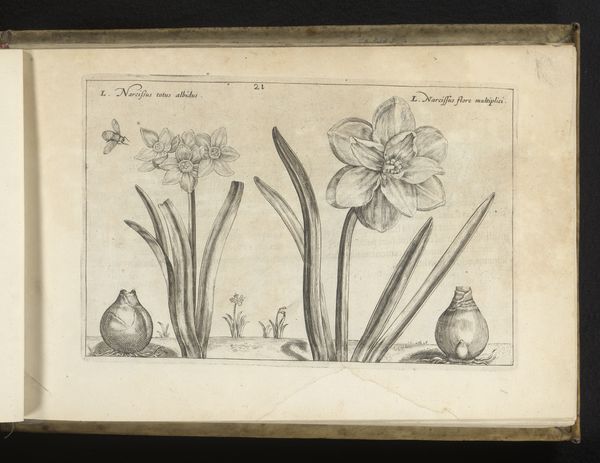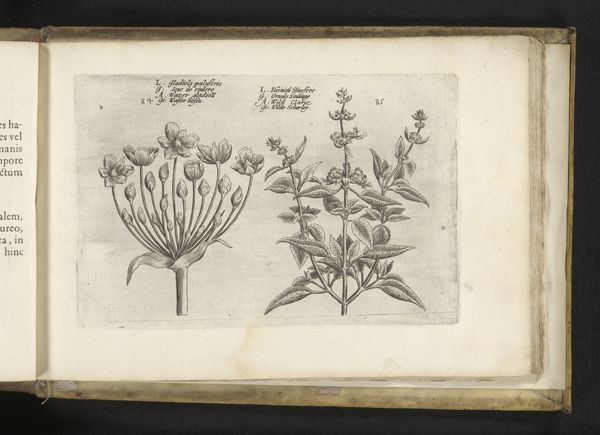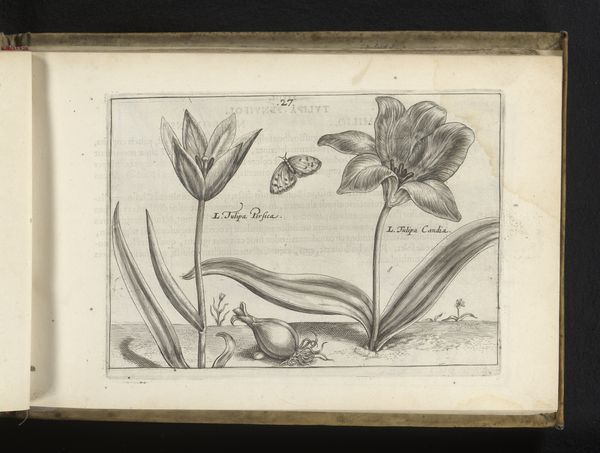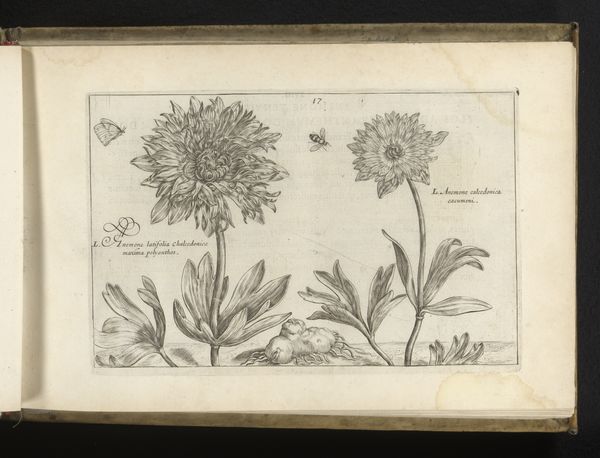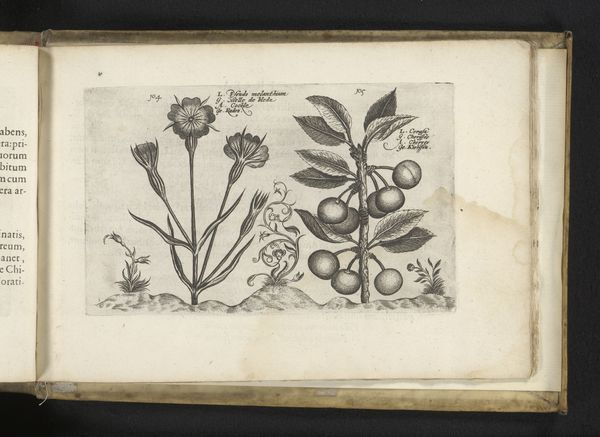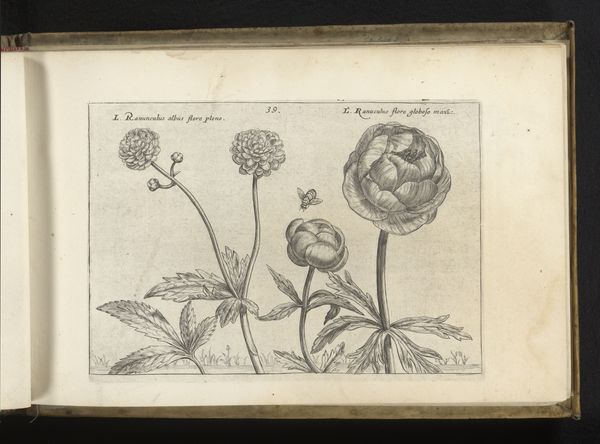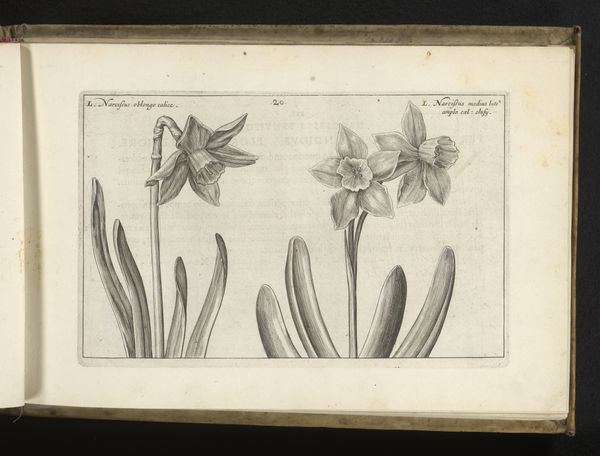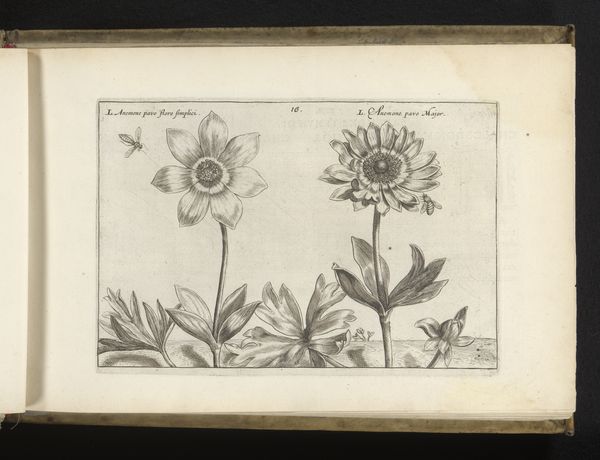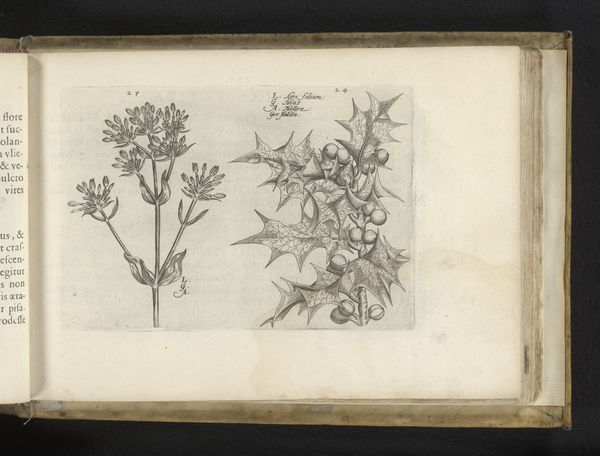
drawing, print, paper, ink, engraving
#
drawing
# print
#
flower
#
paper
#
11_renaissance
#
ink
#
pen-ink sketch
#
engraving
Dimensions: height 147 mm, width 215 mm
Copyright: Rijks Museum: Open Domain
This engraving by Crispijn van de Passe the Younger, created around the 17th century, presents three anemone flowers, each meticulously detailed with its distinct leaf structure. The anemone, historically, carries a duality of meaning. In ancient Greek culture, the anemone sprung from the tears of Aphrodite, mourning Adonis, thus linking it to sorrow and death. Yet, it also represents hope and anticipation, perhaps because of its ephemeral beauty. We observe similar, contrasting symbolism across different times. Consider how the poppy, also red and similarly short-lived, appears in funereal contexts as well as fields of grain, symbolizing both sleep and nourishment. These symbols speak to our collective memory, touching on the subconscious understanding that beauty is fleeting, and life, like these flowers, is transient. This visual language engages viewers on a profound level, stirring emotions tied to our deepest fears and hopes. The anemone, therefore, is not merely a flower but a vessel of layered meanings, continually reshaped by the human psyche across centuries.
Comments
No comments
Be the first to comment and join the conversation on the ultimate creative platform.

